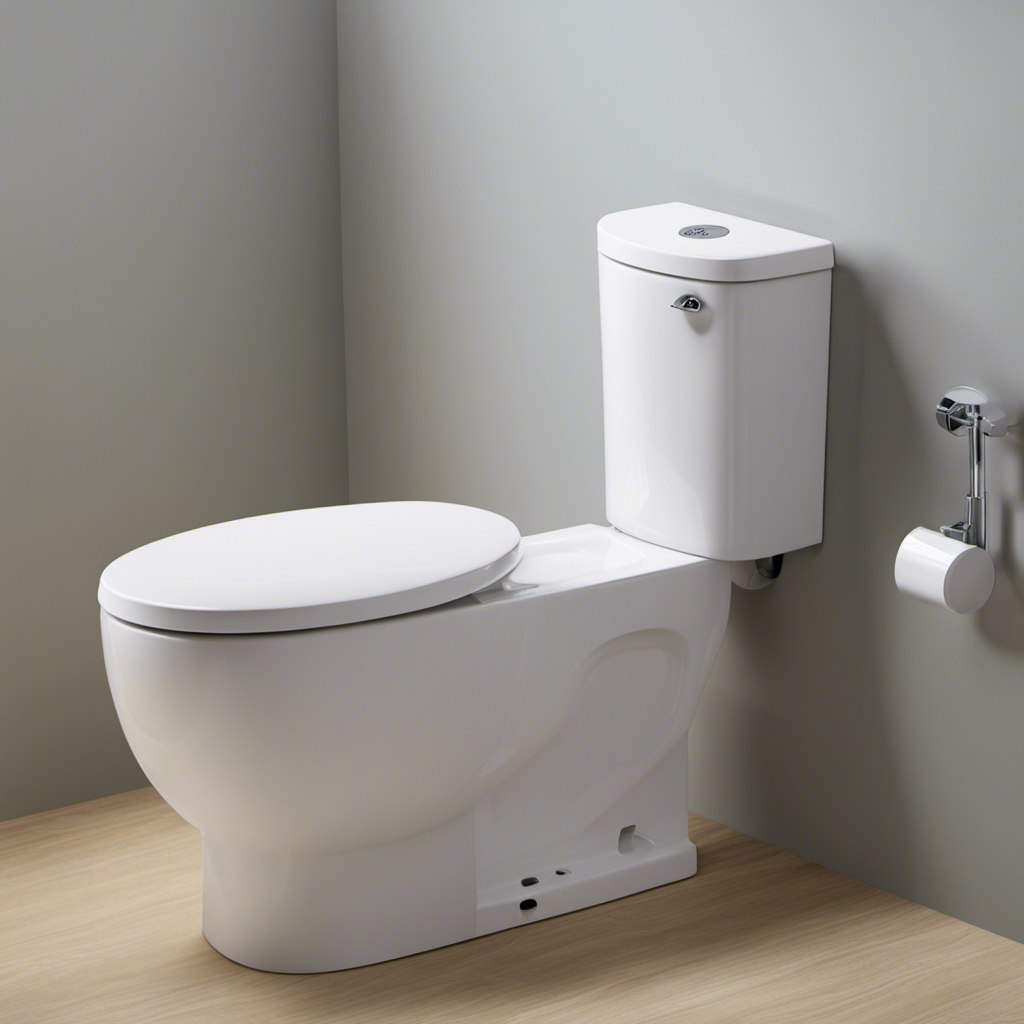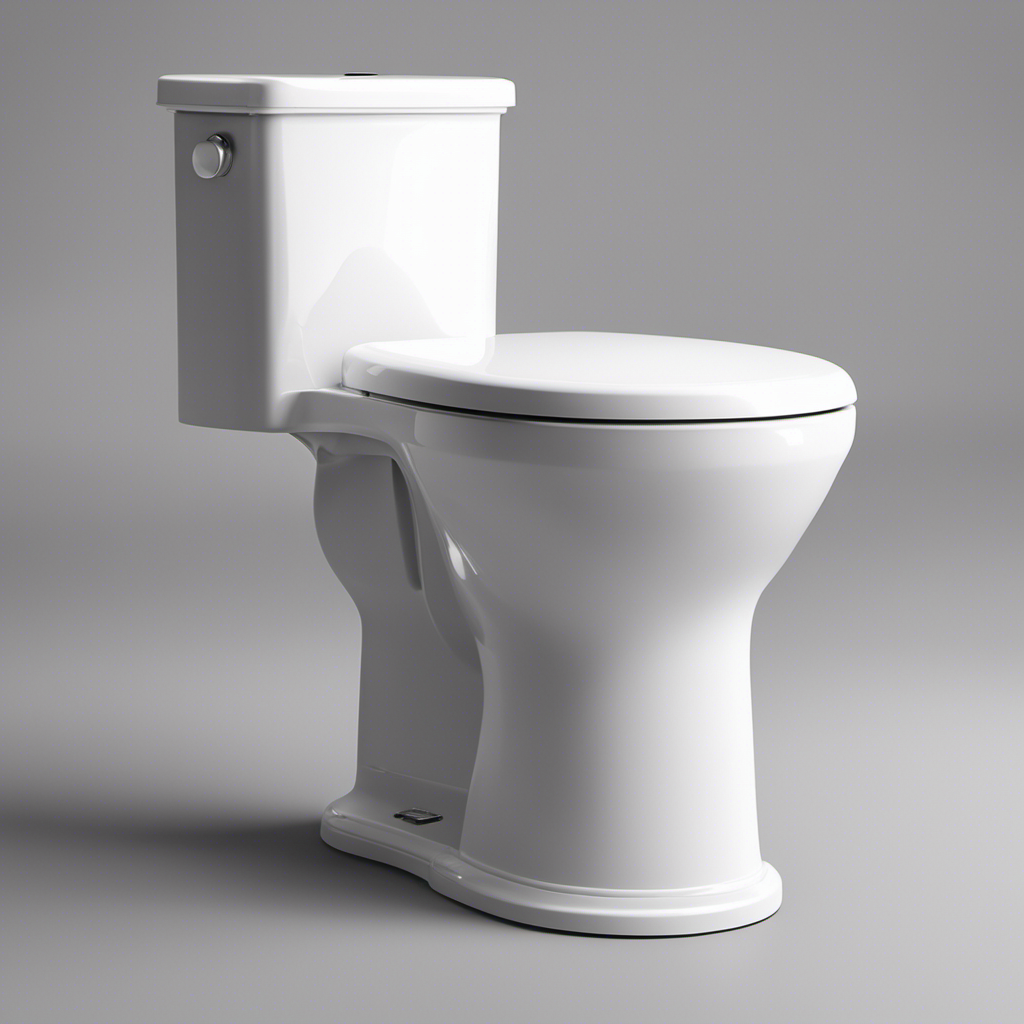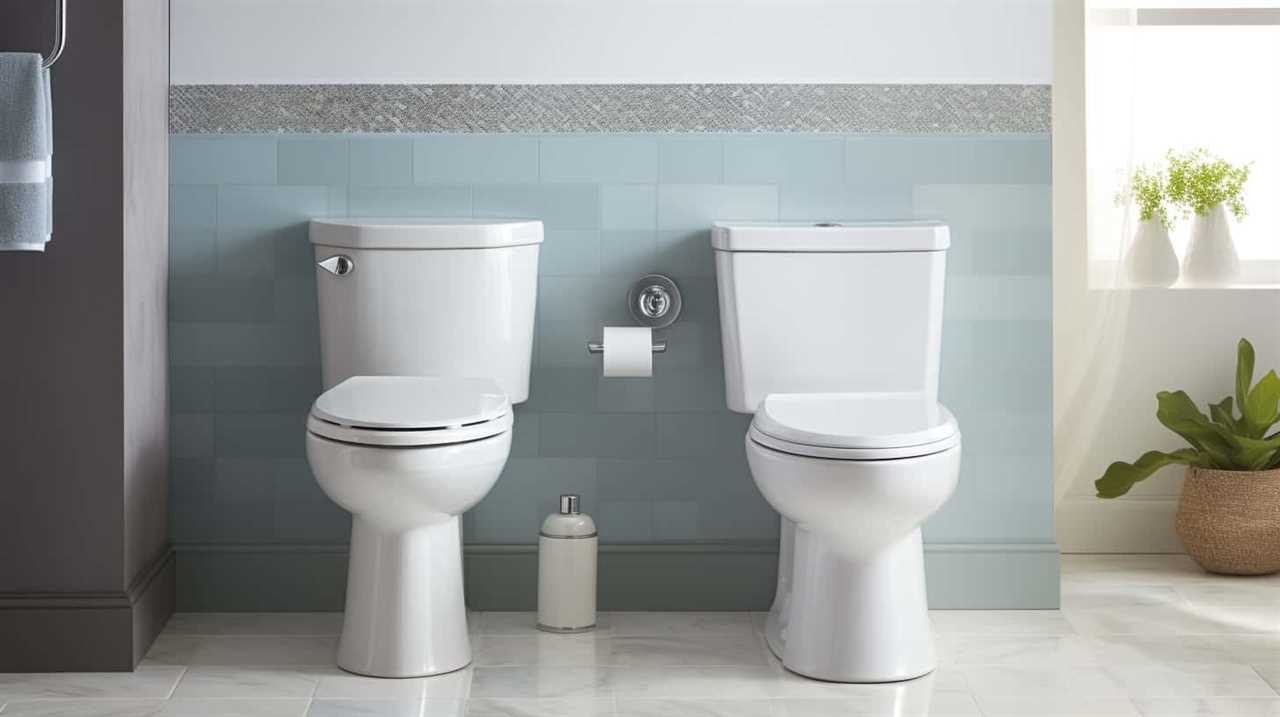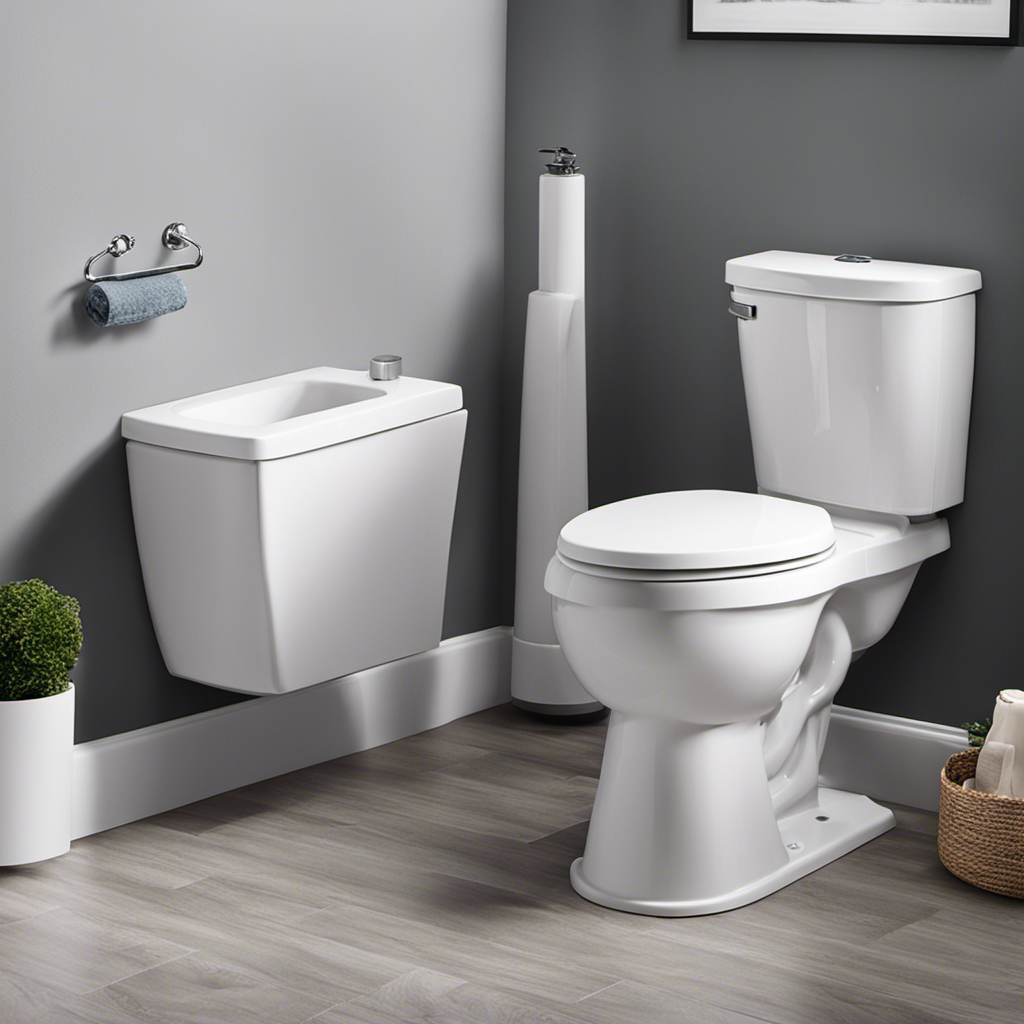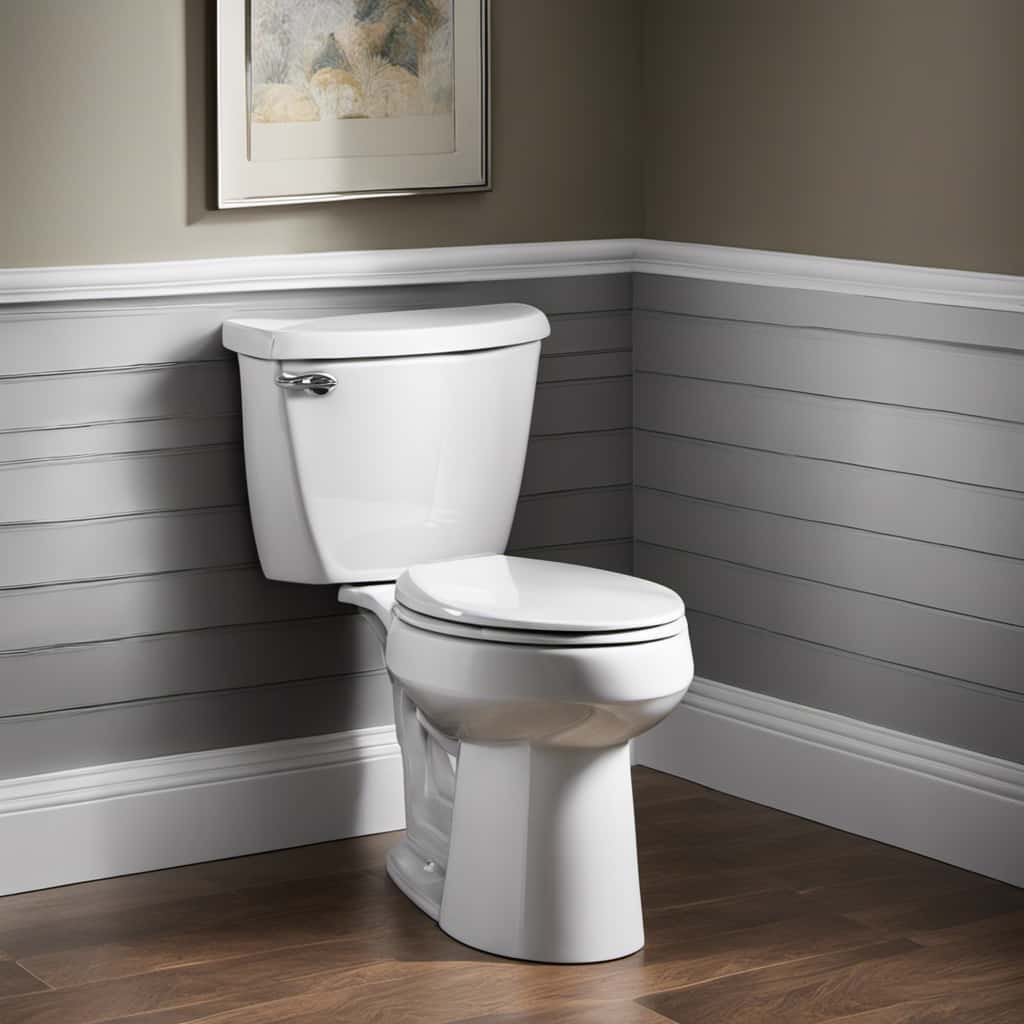So, you’ve got a toilet that just won’t stop running. It’s like a never-ending symphony of wasted water, playing on repeat. Well, fear not, because I’m here to show you how to fix that pesky problem.
In this handy guide, I’ll walk you through the steps of adjusting the toilet float to put an end to the constant flow. With a few simple tools and a little know-how, you’ll be able to stop that running toilet in its tracks.
Let’s get started, shall we?
Key Takeaways
- The toilet float controls the water level in the toilet tank and is a crucial component of the flushing mechanism.
- Improper adjustment of the float can lead to issues such as a running toilet or improper flushing.
- Tools like pliers, screwdriver, and possibly an adjustable wrench are needed to adjust the float.
- Regular maintenance and troubleshooting are important for a properly adjusted toilet float.
Understanding the Toilet Float
The toilet float controls the water level in the toilet tank. It is a crucial component of the toilet’s flushing mechanism. When the toilet is flushed, the float rises and shuts off the water flow once it reaches the desired level.
If the float is not properly adjusted, it can lead to various issues such as a running toilet or a toilet that doesn’t flush properly. To fix this, you may need to replace the toilet float. By ensuring that the float is adjusted correctly, you can prevent water wastage and reduce your water bill.
A properly adjusted toilet float also helps in maintaining the optimal water level, which ensures effective flushing and prevents any overflow or leakage.
Tools Needed for Adjusting the Toilet Float
You’ll need a few tools to properly adjust that toilet float. Understanding toilet float mechanics is crucial for maintaining a functioning and efficient toilet.
The float is responsible for controlling the water level in the tank, ensuring that it fills up to the correct level and shuts off when it reaches the desired amount. If the float is not adjusted properly, it can lead to a running toilet, wasting water and causing unnecessary expenses.
To adjust the float, you will need a pair of pliers, a screwdriver, and possibly an adjustable wrench. These tools will allow you to loosen or tighten the adjustment screw on the float valve, raising or lowering the float to the appropriate position.
Proper toilet float adjustment is essential for preventing water waste and ensuring the longevity of your toilet.
Step-by-Step Guide to Adjusting the Toilet Float
Using a pair of pliers, I tighten the adjustment screw on the float valve to raise or lower the float to the appropriate position. It’s important to adjust the toilet float properly to prevent water wastage and avoid a running toilet.
Here are some signs of a malfunctioning toilet float and steps to adjust it:
-
Signs of a malfunctioning toilet float:
-
Constant running water in the toilet tank.
-
Water overflowing from the tank into the bowl.
-
Difficulty flushing or incomplete flushes.
-
Steps to adjust the toilet float:
- Locate the float valve in the toilet tank.
- Use pliers to tighten or loosen the adjustment screw.
- Test the water level by flushing and adjusting the screw until the water stops at the appropriate level.
Troubleshooting Common Issues With the Toilet Float
If your toilet tank is constantly refilling, it may be a sign of a malfunctioning float valve. Troubleshooting toilet float issues can help identify the problem and prevent further water wastage.
One common issue is a misaligned or stuck float. To fix this, first, turn off the water supply to the toilet. Then, check the float by lifting it up and down. If it moves freely, make sure it is properly aligned with the water level. If it is stuck, clean any debris or mineral buildup around the float mechanism.
Another problem could be a worn-out float valve. In this case, you may need to replace the valve entirely. Remember to follow the manufacturer’s instructions for toilet float repair to ensure proper installation.
Maintenance Tips for a Properly Adjusted Toilet Float
Properly maintaining the toilet float can help prevent water wastage and ensure efficient operation. Here are some maintenance tips for a properly adjusted toilet float:
-
Regularly check the float for any signs of damage or wear. Look for cracks, leaks, or corrosion that may affect its performance. Replace the float if necessary to avoid future issues.
-
Clean the float and surrounding area regularly. Remove any buildup of debris or mineral deposits that can interfere with its movement. Use a mild detergent or vinegar solution to gently clean the float.
-
Adjust the float height as needed. Ensure that the water level is set to the recommended level indicated by the manufacturer. Make small adjustments to the float arm or the float valve to achieve the desired level.
Frequently Asked Questions
Can I Adjust the Toilet Float Without Turning off the Water Supply?
Yes, you can adjust the toilet float without turning off the water supply. However, it is not recommended as it can lead to water leakage and potential damage to the toilet.
How Do I Know if the Toilet Float Is Causing the Running Water Issue?
To troubleshoot a running toilet, it’s important to identify if the toilet float is causing the issue. Signs of a faulty float include continuous water flow and a constantly refilling tank.
Will Adjusting the Toilet Float Affect the Water Pressure in My Other Fixtures?
Adjusting the toilet float should not affect the water pressure in other fixtures. However, if the adjustment is done incorrectly, it could cause potential damage to other fixtures. It is important to follow proper instructions.
Can I Use Any Type of Tool to Adjust the Toilet Float?
Using the right tool to adjust the toilet float has benefits like ease and precision. However, adjusting the float without turning off the water supply can have drawbacks, like potential damage or flooding.
How Often Should I Check and Readjust the Toilet Float?
I check and readjust the toilet float regularly to troubleshoot a constantly running toilet. If the float is faulty, I know how to replace it. It’s important to maintain a properly functioning toilet.
Conclusion
In conclusion, adjusting the toilet float is a simple task that can save you from the annoyance of a constantly running toilet. By understanding the mechanics of the float and following the step-by-step guide, you can easily make the necessary adjustments.
However, it is important to be aware of common issues that may arise and troubleshoot them accordingly. Remember to regularly maintain your toilet float to ensure it continues to function properly.
With a little knowledge and effort, you can achieve a properly adjusted toilet float and a peaceful bathroom experience.
